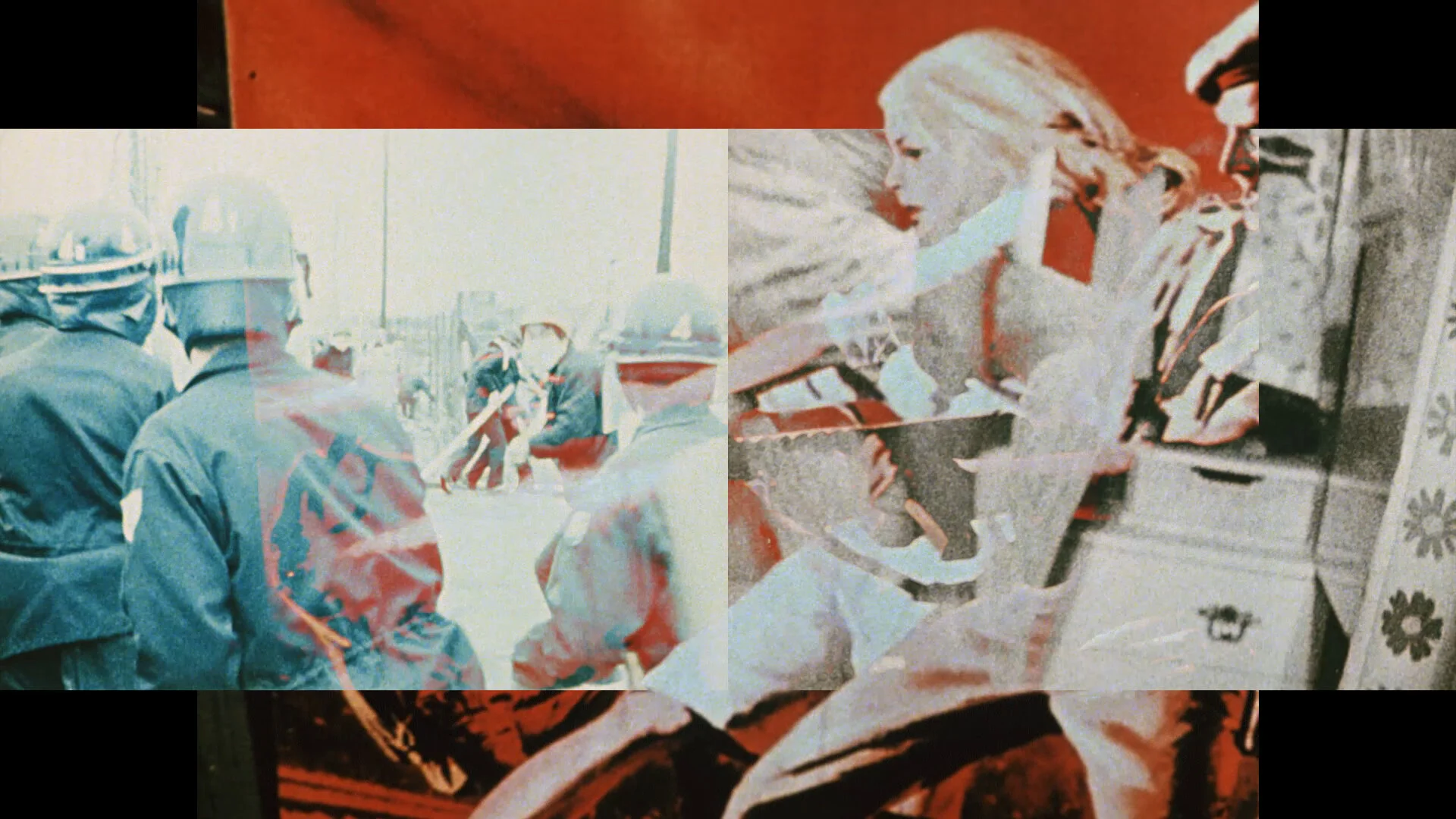SUNDAY, SEPT 5TH, 20:15 — 21:45
AT MARE/MUSEUM OF RECENT ART
In the decades following World War II, Japan experienced several unprecedented social changes to which artists responded provocatively and innovatively, exploring new directions and aesthetics in cinema and pushing the boundaries to new extremes. An amalgam of textures, sensations and feelings, the six avant-garde short films that alternate between film and digital, tradition and modernity, palpable and abstract, reveal potential worlds that are still alive: that of the bombings of Hiroshima and Nagasaki, of the protests and the need for radical change, of fetishes and erotic desire, putting in the spotlight a contemporaneity which still justifies its name. This selection serves both as a brief overview of the underground scene’s evolution over the years and a reflection on how Japanese art of the last century managed to absorb, rethink and influence Western art, whether we talk about a butoh dance, or, the other way around, a tribute to Merce Cunningham by the couple Nam June Paik and Shigeko Kubota.
* Tickets cost 22 RON and can be purchased only from the museum during the opening hours. Schedule: Monday — Sunday, 11:00 — 19:00, closed on Tuesdays. More details here.
NAVEL and A-Bomb
14:20, 1960, JP
D: Eikoh Hosoe
In Eikoh Hosoe's film, featuring Hijikata Tatsumi and his choreography of a butoh dance, the (Japanese) body is connected to the bombing of Hiroshima and Nagasaki and the utter destruction of Japan. Navel and A-Bomb figures the “birth” of a new Japanese identity in the wake of the atomic catastrophe, the subsequent defeat and occupation of Japan.
THE SKIN OF A NAPPING
8:30, 1967, JP
D: Tsuneo Nakai
Single-handedly produced by Nakai, the film features images of the body, with themes of fetishism and reversion to the womb. In addition to using in-camera editing to achieve multiple exposures, he employed direct methods such as coloring and punching holes in the film. This work was selected for the Sogetsu Experimental Film Festival (1967).
“Where am I, where do I come from, where am I going? In this film, I intertwine fetishism with my ideas on reincarnation and reversion. Nowadays even children make references to S&M and fetishes and so forth, but at the time it was all regarded as quite abnormal and antisocial. This is a rough, violent maiden work I made when I was 19 or 20.” (Tsuneo Nakai)
DEAD YOUTH
13:32, 1967, JP
D: Donald Richie
A contemplative exploration of the grief-stricken actions of several men in response to the death of a friend, Dead Youth provides another testament to the elegance of Donald Richie’s artistic vision, as sombre emotions and painful memories are transmitted without the use of dialogue.
Courtesy of Collaborative Cataloging Japan, © Ko Nakajima.
Biological Cycle No. 2
8:17, 1971-82, JP
D: Ko Nakajima
With the arrival of video and the electronic signal processing technology, Nakajima took interest in the digital processing of film over multiple iterations spanning many years. The series is based on the first 16mm film that was shot in a studio with Nakajima's family and birds. Once transferred to video, digital effects were added using the "Animaker," an electronic image synthesizer that he invented (also nicknamed "Ko-puter").
FOR THE DAMAGED RIGHT EYE
12:21, 1968, JP
D: Toshio Matsumoto
Described by the director as “an expression that deeply cuts into the core of the contemporary”, the overlapping triple-projection of For the Damaged Right Eye sees Matsumoto Toshio capture a spectrum of activities from politics to play in late-1960s Shinjuku with feverish simultaneity.
MERCE BY MERCE BY PAIK
28:45, 1978, USA
D: Nam June Paik, Charles Atlas, Shigeko Kubota
Merce by Merce by Paik is a two-part tribute to groundbreaking postmodern choreographer Merce Cunningham and avant-garde master Marcel Duchamp. Blue Studio: Five Segments is a stunning work of videodance by Cunningham and artist Charles Atlas, who was then filmmaker-in-residence with the Cunningham Dance Company. Merce and Marcel, in which Nam June Paik and Shigeko Kubota create a densely textured video collage that links the two visionary artists, further queries the relationship between everyday gestures and formal notions of dance







